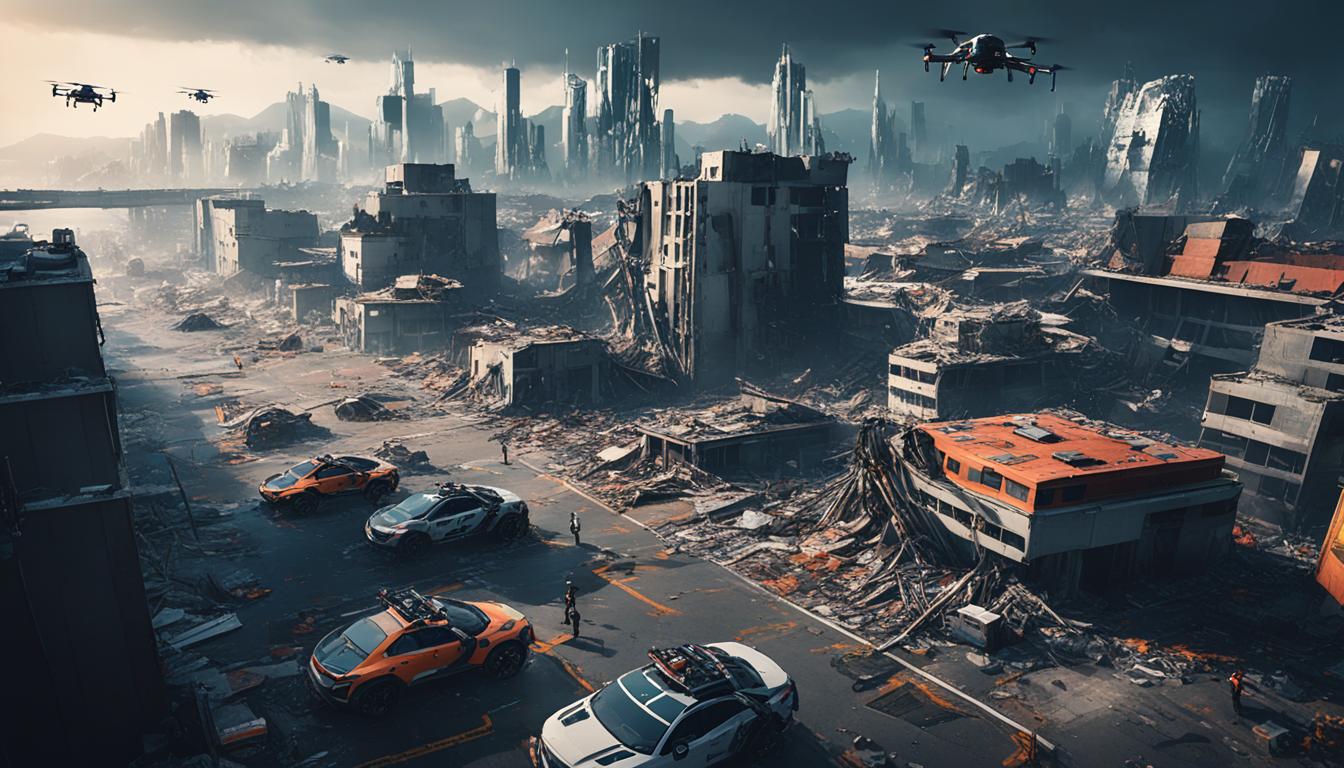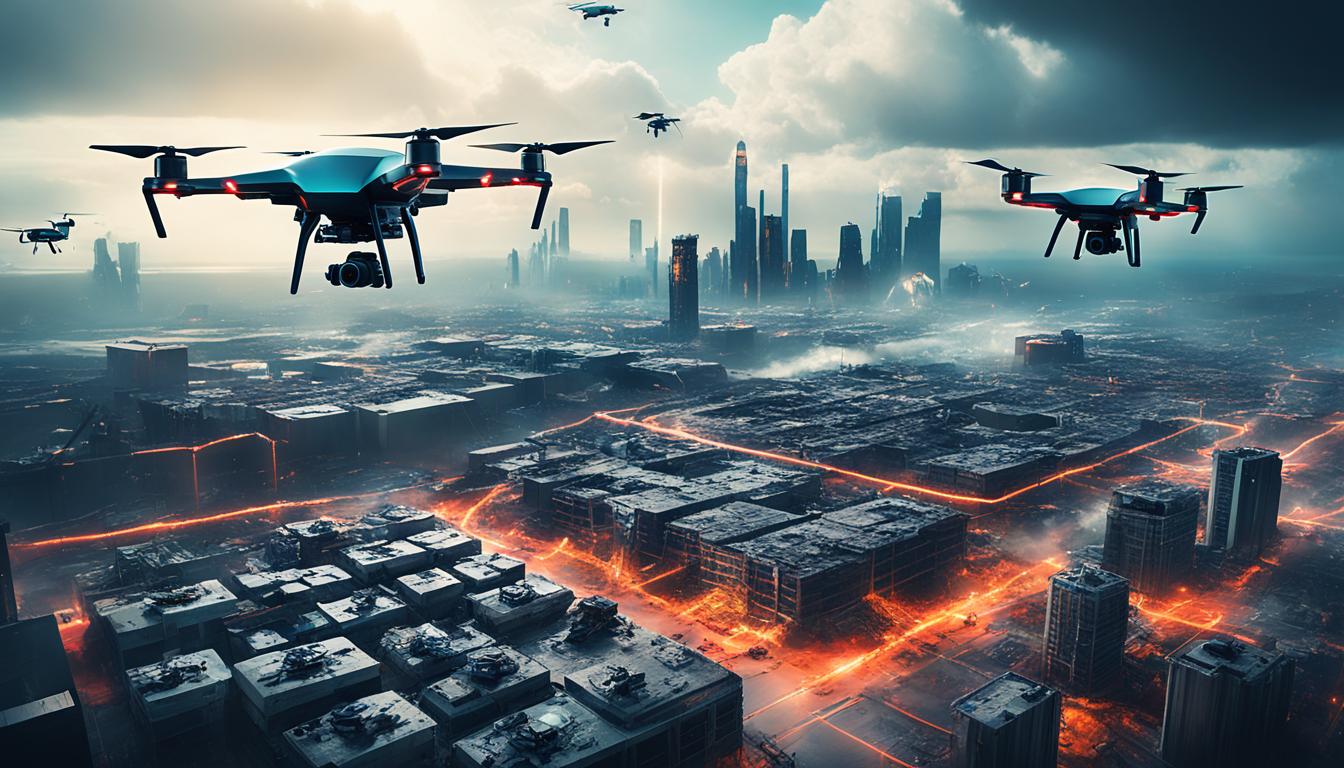
Natural disasters like fires, floods, hurricanes, and earthquakes, and tsunamis affect 218 million people and claim an average of 68,000 lives each year. The situation continues to worsen, with the annual number of natural disasters predicted to rise 37% globally by 2025. Researchers, scientists, and organizations are turning to artificial intelligence (AI) and machine learning (ML) to help mitigate the damage of natural events by reliably processing large volumes of data in real time, predicting natural events, and enhancing mitigation responses. AI and ML can help accelerate the delivery of aid and improve the decisions and actions of front-line relief workers.
Key Takeaways
- AI and machine learning can help predict natural disasters and provide early warning systems.
- AI-powered risk assessment and vulnerability mapping can enhance disaster preparedness.
- AI can assist in rapidly assessing damage and optimizing resource allocation during disaster response.
- Social media monitoring and information extraction using AI can improve situational awareness and communication during crises.
- AI-based decision support systems and evacuation planning can save lives and minimize the impact of natural disasters.
AI’s Role in Predicting and Mitigating Natural Disasters
As natural disasters become increasingly frequent and devastating, researchers, scientists, and organizations are turning to the power of artificial intelligence (AI) and machine learning (ML) to enhance disaster response and mitigation efforts. Through AI, they can analyze patterns in past seismic activities to predict earthquakes or use historical meteorological data to forecast hurricanes with greater accuracy.
Predictive Analytics and Early Warning Systems
IBM’s PAIRS Geoscope, an AI-driven technology, analyzes geospatial data to predict the likelihood of floods, enabling early warning systems and proactive disaster planning. Similarly, Texas A&M University’s Socio-Ecophysiological Resilience Assessment and Prediction (SERAP) tool leverages AI to assess a community’s resilience and help plan and prepare for potential disasters. This type of predictive analytics and early warning system empowers communities to take proactive measures, ultimately saving lives and minimizing the impact of natural catastrophes.
Risk Assessment and Vulnerability Mapping
In addition to predictive capabilities, AI-powered technologies can also assist in risk assessment and vulnerability mapping. By analyzing a vast array of data sources, including satellite imagery, sensor networks, and historical records, AI can generate detailed models and visualizations that highlight areas most prone to the devastating effects of natural disasters. This information is crucial for emergency response teams, policymakers, and community leaders to allocate resources effectively and prioritize mitigation efforts.
Furthermore, AI can manage a high volume of emergency calls in record time and perform multiple functions simultaneously, unlike human operators. This allows for a more efficient and coordinated response, ensuring that critical information and assistance reach those in need as quickly as possible during times of crisis.

What are the potential applications of AI in disaster response by 2025?
As natural disasters continue to intensify globally, the role of artificial intelligence (AI) in enhancing disaster response and recovery efforts has become increasingly crucial. One area where AI shines is in damage assessment and resource allocation. The U.S. Department of Defense’s xView2 project utilizes machine learning (ML) algorithms and satellite imagery to rapidly identify and categorize the severity of infrastructure and building damage in disaster-stricken areas, accelerating the detection process from weeks to mere hours or minutes.
Beyond physical damage assessment, AI-powered social media monitoring and information extraction tools are proving invaluable. AI-driven chatbots can deliver lifesaving information to people affected by natural disasters through social media channels, while platforms like the Artificial Intelligence Digital Response (AIDR) automatically collect and classify social media posts to provide real-time, processed data for disaster response teams.
Additionally, cloud-based AI-powered decision support systems and evacuation planning capabilities are empowering emergency response teams to manage devices, applications, and communication apps virtually during natural disasters. These AI-driven platforms can help coordinate relief efforts, optimize resource allocation, and guide communities through critical evacuation procedures with precision and agility.
| AI Application | Potential Benefits |
|---|---|
| Damage Assessment and Resource Allocation | Accelerates damage detection from weeks to hours or minutes using ML algorithms and satellite imagery |
| Social Media Monitoring and Information Extraction | Enables AI-powered chatbots to deliver lifesaving information and AIDR to classify social media posts for real-time data |
| Decision Support Systems and Evacuation Planning | Empowers emergency teams to manage devices, apps, and communication virtually during disasters |
As the frequency and intensity of natural disasters continue to rise, the applications of AI in disaster response will become increasingly vital to saving lives, minimizing damage, and expediting recovery efforts by 2025 and beyond.
Conclusion
While artificial intelligence (AI) may not be able to completely replace the current systems for disaster management, it can certainly help fill in the gaps and improve outcomes at every stage during and after a natural disaster. To achieve the best possible disaster response, we need an increased supply of quality data, better collaboration among disaster management organizations, and an agile approach that seamlessly integrates both machine and human intelligence.
To this end, innovative technology solutions like Ambiq’s ultra-low power Subthreshold Power Optimized Technology (SPOT®) platform and their line of Apollo System-on-chips (SoCs) can provide a reliable source of energy-efficient and AI-capable microchips for the sensors and endpoint devices placed in disaster areas. These advancements in machine learning (ML), predictive analytics, natural language processing (NLP), computer vision, and autonomous systems will undoubtedly revolutionize the way we respond to and recover from natural disasters in the years to come.
By leveraging the power of AI and decision support systems, emergency response teams can manage devices, applications, and communication apps virtually, while also automating the collection and classification of crucial social media data to provide real-time, processed information for disaster relief efforts. The future of AI-driven disaster response is bright, and with continued innovation and collaboration, we can ensure that the most vulnerable communities are better protected and supported during times of crisis.
FAQ
How can AI and machine learning help in disaster response?
AI and machine learning can help in various ways, such as analyzing patterns in past data to predict natural events, assessing risk and vulnerability, detecting and classifying damage, managing emergency communications, and supporting decision-making for evacuation planning and resource allocation.
What are the key applications of AI in predicting and mitigating natural disasters?
AI can be used for predictive analytics and early warning systems to forecast events like earthquakes and hurricanes. It can also help with risk assessment and vulnerability mapping to identify high-risk areas and plan mitigation strategies.
How can AI assist with damage assessment and resource allocation during disaster response?
AI-powered computer vision and satellite imagery analysis can rapidly detect and categorize infrastructure and building damage, speeding up the assessment process from weeks to hours or minutes. This information can then be used to allocate resources and prioritize response efforts more effectively.
What role can AI play in social media monitoring and information extraction during disasters?
AI-powered platforms can automatically collect and classify social media posts to provide real-time, processed data for disaster response teams. This can help deliver lifesaving information to affected communities and enhance situational awareness for emergency responders.
How can AI-based decision support systems help with evacuation planning and emergency management?
AI can assist with evacuation planning by analyzing data on factors like traffic patterns, weather conditions, and population density to recommend optimal routes and timing. AI-powered decision support systems can also help emergency managers make more informed decisions during a crisis.
